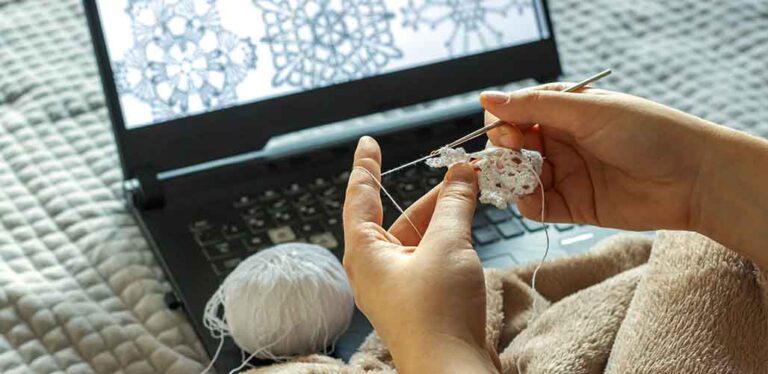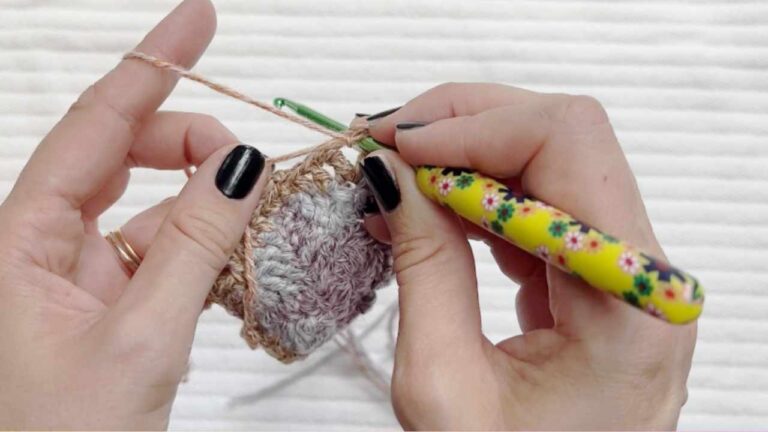My Top 20 Do’s and Don’ts of Learning to Crochet
My do’s and don’ts of learning to crochet focus on having the right kit, taking it slow, starting simple and staying calm. But there is a lot more to it than just that!
Learning a new craft can seem like a lot to take in and inevitably has a big dash of discomfort and confusion. These do’s and don’ts come from a decade of crocheting and amigurumi designing, a journey which has been filled with plenty of mistakes and learning curves. Hopefully they’ll help you to get off on the right foot and stay on track.
DO start simple
Begin with a basic sampler of chains, single and double crochets, or with a traditional style granny square. Repeating these beginner stitches will set your off and the right foot for your next more advanced crochet adventure.
DO begin with a thicker yarn
Aran or chunky weight yarn will allow you to easily see your stitches, and require less fine motor movements.
DO use a bigger hook than the yarn recommends
If you are struggling with tension, go up a hook size to create bigger loops in your chain or stitch gaps.
DO use an ergonomic hook
Wide hooks with soft yet slightly textured surfaces make for more comfortable crocheting.
DO check your hook is smooth
To work your yarn properly, your crochet hook needs to be as smooth as possible. Burrs and rough edges will catch on the fibers and impede you massively. Check the hook is smooth by running your fingertip or a piece of yarn back and forth before you begin.
DO keep sessions short
Early crochet sessions should be kept to around fifteen minutes long, depending on your personal learning style. I find shorter sessions enable you to concentrate more, and you can spread several throughout the day and learn more than you would in one big daily block.
DO stay within your budget
You don’t know if this hobby is for you yet, or even what direction you might end up taking in terms of the sort of things you are going to make. Set a starting budget for some yarn and a hook set, and stick to it.
DO take notes
I am a big fan of note taking. When I first start out with a new skill, I jot down a summary of what happened, what I learned and the challenges I faced. It keeps me on track, and motivated as I go along. You can also see your progress and feel better about yourself if you start to feel a little disillusioned a few sessions down the line.
DO look at different types of resources
Different learning resources work better for different people. There is no definite best place to learn, it will depend on how you best take in new information. The main places to go are YouTube tutorials, books, in person lessons or blogs like this one!
DO ask for help
Nothing is more demoralising than getting stuck. Places to go for help include the comments section under YouTube tutorials or on blogs, or if you’re lucky a friend that knows how to crochet. You can even rope in a willing buddy who can’t crochet to cast their eyes over the instructions with you, two heads being better than one!
DON’T be discouraged by mistakes
Everyone makes mistakes. You know that, but it’s still discouraging when things go wrong. But remember that we all go wrong, even those of us who have been crocheting for over a decade. It’s all part of the learning process.
DON’T show it off until you are ready
I find it stressful when I have to show something off before I’m happy with it, and this is more advice for me than anyone else. It’s okay to say “not yet” if someone wants to admire your progress. Privacy can help you to feel relaxed and calm, taking it at your own pace.
DON’T rush
Get the basics right before you go on to the more advanced techniques. It’s awesome to be keen and enthusiastic, but your wonderful future crochet creations need firm foundations.
DON’T spend the earth on yarn
Yarn can be crazy levels of expensive, but many budget yarns are just as good for learning as the more high priced brands. Save the expensive yarn purchases for when you know what you want to make and are confident you can make the best of it.
DON’T expect too much too soon
New skills are challenging, and your early projects won’t be neat, or have consistent tension, and that’s just fine. You’ll get there, and be proud of what you’ve done so far.
DON’T forget stitch markers
Counting in your head seems like a reasonable thing for an adult to be able to do, but don’t go there. Life is full of interruptions, and stitch markers make the whole process more enjoyable and remove that stressful reverse counting situation we’ve all found ourselves in from time to time.
DON’T start with chenille
Chenille is gorgeous, but it has a fine strand through the middle of the fluffy hairs and it gets caught and snaps more easily than most yarns. Save this one for later.
DON’T underestimate the power of repetition
This is most important for learning tension, but applies to your basic stitches too. There is no such thing as too much practice when it comes to the basis, and granny squares a great way to get your hours in.
DON’T fear the frog
Frogging is the process of unwinding or unravelling your work. Yarn is often tough stuff, you can undo it and reuse it again. We all frog projects all the time, especially when making samples of stitches to learn them.
DON’T give up
If you want to do this, you can! The learning process can feel frustrating, but if you find yourself feeling that way you can switch resources, try a different pattern style and of course, ask for help. You’ll get there, and it’ll be so worth the journey.






How do you get started selling. I feel I underprice my stuff and still can’t sell it.
Hi Rebecca, I’m afraid I’m not the best person to ask because I’ve never done a market. I also don’t take commissions anymore because I found it problematic, I made a video about it a little while ago: https://youtu.be/w9-EQfiXR2o?si=NTplKCU_egPHfoAY
I did however watch a video recently by Crochet Me Zaddy, who’d recently done a market and he talked about a few sites that had pricing calculators, so it might be worth looking that up and see if you find them helpful 🙂